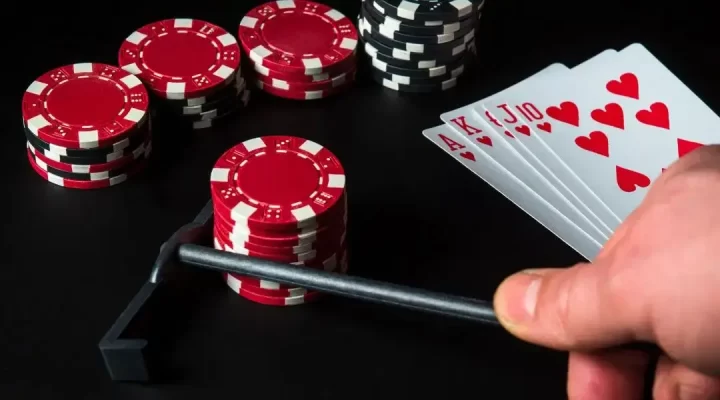Understanding the Mechanism of Poker Rake

The world of poker is one steeped in strategy, skill, and an intricate network of financial flows. Among the many financial mechanics that underpin the poker industry, the rake stands out as both essential and sometimes controversial. This review explores in detail the functioning of the rake, shedding light on its role in ensuring the smooth operation of gaming platforms and tournaments, while providing clarity for players seeking transparent information on fees. By examining historical trends, statistical data, and industry practices, this article offers a thorough analysis aimed at demystifying the process, with a balanced look at both its benefits and challenges.
An Overview of Rake
At its most fundamental level, the rake is a fee extracted from each pot or table session to support the operational costs of hosting a game. In traditional card rooms and modern online venues alike, this fee plays a critical role. Unlike house-banked games such as blackjack, roulette, or craps, where the casino profits directly from the odds favoring the house, poker is a peer-to-peer game—meaning the venue must earn its revenue elsewhere.
The rationale behind the rake is straightforward: to generate income that funds the services provided by the host—ranging from site maintenance and security to marketing and customer support. The transparency with which the rake is applied is imperative in maintaining the trust of the player community.
Rake as a Financial Engine
Rake is not merely a transactional fee; it represents the lifeblood of the poker ecosystem like in omaha poker. Its proper allocation is essential for the continual upgrade of gaming infrastructures, the innovation of software solutions, and the overall sustainability of the industry. Over the years, advancements in technology and operational efficiencies have influenced the structure of the rake. Many platforms now adopt dynamic models tailored to different types of games and player volumes, ensuring fairness and competitiveness.
In live settings, the percentage taken from each pot typically ranges between 2% to 10%, with maximum caps imposed to protect lower-stake pots. In online environments, however, the calculations are often more complex, with some platforms opting for time-based fees or membership subscriptions, influencing the overall payout structure. In this context, understanding the concept of “how does rake work in poker” is crucial for both new players and seasoned gamblers.
Historical Perspective and Evolving Models
Historically, the role of the rake has evolved dramatically. Early poker rooms operated with minimal fees because the market was smaller and regulatory oversight was less stringent. With the advent of online poker in the late 1990s and early 2000s, the volume of transactions increased exponentially, prompting operators to refine their revenue models. The introduction of structured fee models not only ensured higher profitability but also facilitated a more streamlined gaming experience.
Data indicates that as online platforms grew, an average rake percentage of around 5% to 7% became the industry standard. Advances in digital payment systems and rigorous compliance frameworks further shaped a new era for poker. In this environment, terms such as “rake poker term” became part of the everyday vocabulary of both casual players and experts alike.
Factors Influencing Rake Structures
Multiple factors affect the way the rake is implemented, including game format, table stakes, and regional regulations. Understanding these elements can help players make more informed decisions about where and how to invest their time and resources.
Key factors include:
- Game Type: Different poker variations may incur distinct rake percentages. For instance, tournaments might have an entry fee structure, while cash games typically integrate the fee into each hand.
- Player Volume: High-traffic platforms can afford to adjust lower rake percentages due to the sheer number of transactions.
- Market Competition: In highly competitive markets, operators often tweak their rake to offer more player-friendly conditions, thereby attracting a larger community.
- Regulatory Environment: In regions with strict gaming regulations, additional fees or specific capping models may be mandated, impacting how the rake is collected.
In addition to these factors, the advent of cryptocurrencies and secure digital transactions has prompted several platforms to reimagine their fee models. This ongoing evolution ensures that both players and operators benefit from increased transparency and efficiency.
Comparative Analysis: Live vs. Online Poker
A comparative review of live and online poker demonstrates that while the underlying principle of the rake remains consistent, its application diverges significantly between the two formats.
Below is a table outlining the differences:
| Aspect | Live Poker | Online Poker |
|---|---|---|
| Typical Rake Percentage | 5% – 10% (with a cap on low-stake pots) | 2% – 7% (varies with player volume) |
| Fee Collection Method | Direct deduction from the pot | Automated fee processing per hand |
| Transparency | Usually announced at the table | Detailed breakdown in account history |
| Additional Charges | May include seating fees | Membership or subscription models exist |
This table offers a snapshot of the primary differences in fee collection between the two formats, underscoring how operational dynamics influence fee structures.
The Role of Rake in Gambling Economics

Beyond poker, the concept of the rake permeates the broader industry of gaming and betting. Known as “rake in gambling” in some circles, this fee supports a range of ancillary activities such as regulatory compliance, prize distribution, and technological enhancements. As the gambling industry continues to expand, rigorous auditing and transparent reporting practices have become more critical than ever to maintain the integrity of the financial flows within these systems.From a statistical standpoint, the implementation of fair and balanced rake models has been shown to enhance player retention by approximately 15% to 20% when compared to opaque fee structures. By investing in platform enhancements and customer-centric services, operators are better positioned to respond to the evolving needs of their user base and regulatory demands.
Implementing Best Practices for Rake Management
For operators and event organizers, striking the right balance in rake management is a challenging task. The following list highlights several best practices for maintaining an optimal fee structure:
- Ensure complete transparency in fee disclosure at the onset of each game.
- Regularly review and adjust the percentage based on market trends and player feedback.
- Introduce caps on high-stake games to prevent excessive fees.
- Offer clear, accessible explanations of how fees are calculated.
- Leverage data analytics to optimize fee structures, ensuring both profitability and player satisfaction.
These practices not only foster a positive gaming environment but also contribute to broader industry trust and long-term sustainability.
Looking Ahead: Future Trends in Rake Implementation
Innovation in the technological realm is driving significant changes in how the rake is calculated and implemented. The increasing use of artificial intelligence and advanced statistical models is paving the way for even more personalized fee structures. As operators leverage real-time data analytics, players might soon benefit from adaptive rake models that adjust based on individual play patterns, tournament structures, and even local market conditions.
Moreover, increased regulatory scrutiny and the push for global standardization of online gaming practices may lead to a more uniform application of the rake across various jurisdictions. This evolution is likely to result in enhanced transparency and a level playing field for all participants, further solidifying the role of the rake as a vital component of the poker ecosystem.
Balancing Operator Profitability with Player Satisfaction
It is essential to acknowledge that the rake must serve the interests of both operators and players. While it is necessary for the financial health of any poker establishment, excessive fees can dissuade participation. Striking an equilibrium is paramount. Operators can achieve this by embracing innovative fee models that adapt to market conditions, thereby ensuring that the thrill of the game is not diluted by burdensome costs.
Research has demonstrated that when transparency and fairness are prioritized, players are more inclined to engage in regular gameplay and recommend platforms to others. These dynamics help foster community growth and reinforce the overall reputation of the poker community.
Final Thoughts
In conclusion, a well-managed rake system is indispensable to the poker industry. By providing the necessary funds for infrastructure, security, and innovation, it acts as both a facilitator and a stabilizer within the ecosystem. For anyone wondering the intricate answer to “how does rake work in poker”, the key lies in its balanced application—ensuring that operational costs are met while still affording players an enjoyable and competitive experience.
As the industry continues to evolve, with digital advancements and shifting regulatory landscapes, understanding the nuances of rake will remain a cornerstone for both players and operators. The measured, data-driven approach to fee management not only underpins the economic success of gaming platforms but also reassures players of a fair and transparent system—ensuring that the game of poker retains both its strategic allure and its competitive spirit.